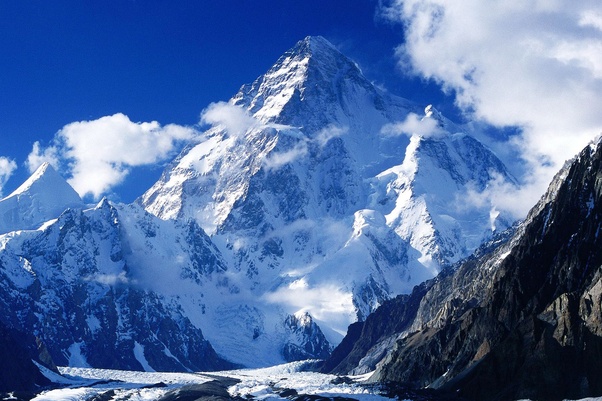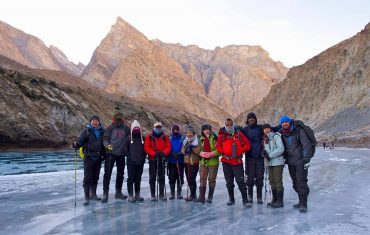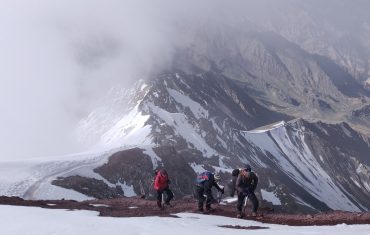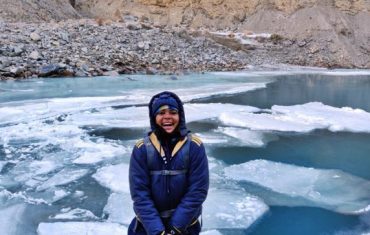Table of Contents:
Which is the Highest Peak in India?
Kangchenjunga – 8,586 m (28,169 ft)
Kanchenjunga is considered to be the highest mountain peak in India. It is India’s highest and world’s 3rd highest mountain with an altitude of 8,586 m (28,169 ft).
Where is Kanchenjunga located?
This highest mountain peak of India is located at the border of India and Nepal in the great Himalayan range near the state of Sikkim, India just 46 miles northwest of Darjeeling.
What is the meaning of Kanchenjunga?
The translated meaning of Kanchenjunga is “Five Treasures of Snow” (named after gold, silver, gems, grain and holy books).
What is the religious significance of Kangchenjunga?
The Kangchenjungamountain section contains a total of five peaks and this Himalayan mountain region has twelve more peaks over 7,000 m (23,000 ft).
All these five peaks are considered as holy and places of repositories of God. Three of five peaks which are known as main, southern and central are on the border of North Sikkim district of Sikkim, India. The other two peaks are entirely on the Nepal side in the Taplejung District.
Kanchenjunga is to the Indians in Sikkim what Everest is to Nepal. It is worshipped in its festivals and dances and honored in its traditions. It is considered so sacred in Sikkim that many successful expeditions have stopped short of the summit.
India, Nepal, and Bhutan have agreed to join hands, on conservation initiatives for Kanchenjunga transboundary landscape. It is considered to be a trans-boundary area among friendly countries that are jointly involved in its development and conservation.
Why is K2 not considered the highest mountain peak in India?
The entire state of Jammu & Kashmir lies within the boundaries of the Republic of India, according to the Survey of India, This makes Gilgit-Baltistan and the Karakoram Range Indian territory and K2 mountain which lies in this region could have been the highest peak in India.
But, as of today, LAC is the internationally accepted boundary between India, Pakistan, and China. Although India disputes this claim, K2 comes under Pakistan considering LAC as the boundary.
Hence Kanchenjunga summit (one side of it) is now the highest mountain peak in India.
Can people summit Kanchenjunga Peak from the Indian side?
Mount Kanchenjunga is a religious symbol for Buddhists, who wield significant clout in Sikkim. The route up the world’s third-highest mountain appears to have been shut off for good following a revolt by local Buddhists, who are incensed by what they regard as the desecration of the mountain by godless foreigners.
The government of the north-east Indian state of Sikkim has now banned expeditions to Kanchenjunga since 2000.
Kanchenjunga Lies in the border between Nepal and India. It can be summitted from India as well as the Nepal side. As people are not allowed to summit Kanchenjunga from the Indian side., the Kanchenjunga summit is attempted more from the Nepal side rather than the Indian side.
Why is Kanchenjunga Peak known as the virgin peak in the world?
Kanchenjunga is the only 8000-meter peak on which the true summit is forbidden to all climbers. No one has truly summited Kanchenjunga. Even now it is considered virgin and unconquered as the parties to ascend the mountain never attempt the last few feet to the summit. This is out of voluntary respect for the local Sikkimese people, who consider the Kanchenjunga peak as sacred. The mountain has been climbed, but the team stopped 150 ft before the summit due to the mountain being sacred to Buddhists, Hindus and a few other religious groups.
The victorious British expedition of 1955 set the standard by stopping a few feet short of the actual summit, in honor of the sentiments of the local people.
The subsequent next two summits were teams led by India’s Colonel N. Kumar in 1977 and by British climber Doug Scott in 1979. These parties also honored the tradition of stopping a few feet short of the actual summit.
How difficult is the summit to Kanchenjunga Peak?
There is a continuous threat of avalanches and mudslides in this Himalayan region, as it receives very heavy precipitation throughout the year. The mountain slope is tough to climb as it is very steep. It is so steep the snow does not stick to it.
Sir John Hunt, who has summited Mt.Everest along with Sir Edmund Hillary and Tenzing Norkey, has described it, a mountain more difficult and dangerous to climb, than Everest itself.
It is the highest in terms of the fatality rate. It requires very good fitness and proper mountain climbing skills for the Kanchenjunga Expedition. Therefore, it is rated as a least climbed peak among 8000 meters.





 WhatsApp Us
WhatsApp Us